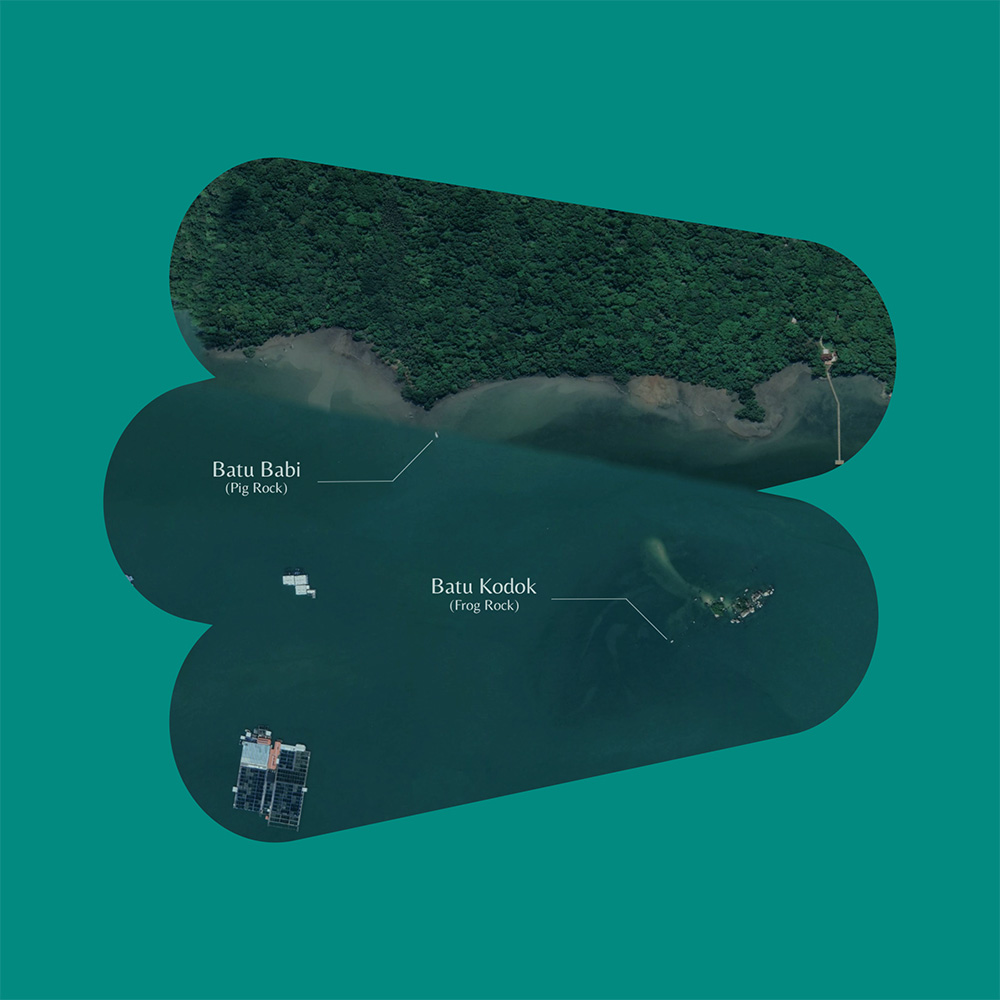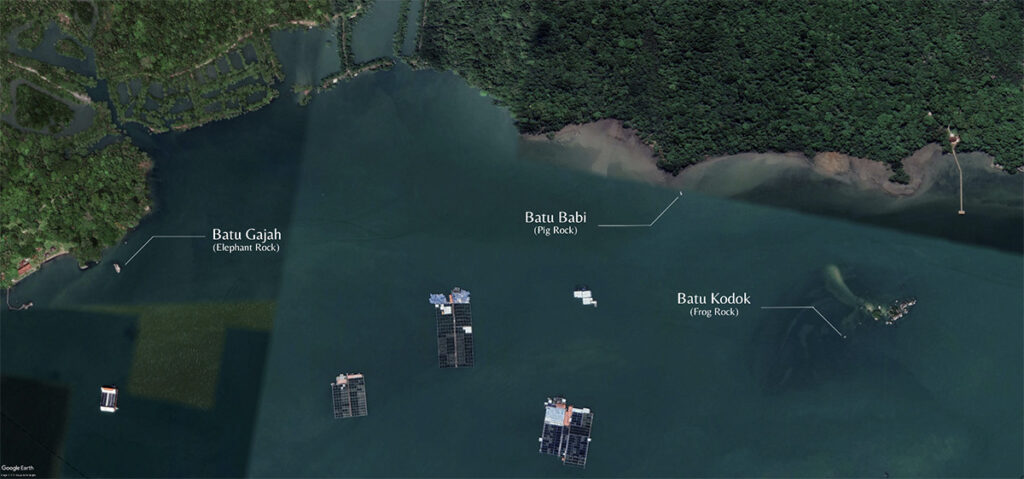Heritage
The (Original) Legend of Pulau Ubin
Published
February 28, 2024
By
Syazwan

Growing up with Folktales
I remember spending most of my childhood reading books or watching classical Malay films which retold our cultural folktales and legends such as Singapura Dilanggar Todak (Singapore Attacked By Garfish) and how the Sisters’ Island came to be. These narrations portrayed the beliefs and culture of pre-colonial Singapore, back when Singapore was still under the influence of Malay rulers. Centuries on, these folktales and legends continue to be passed down to future generations in what could be described as a tradition of oral history.
For the Ubin Orang Pulau, a piece of oral history that has been passed down to us by our forefathers would be the Legend of Pulau Ubin, specifically referring to the three rock formations found off the southeastern coasts of the island.
The Legend of Pulau Ubin
Once upon a time, there were three animals: an elephant, a frog and a pig, on the eastern coasts of Pulau Ujong (mainland Singapore). They wanted to see who among them were the best swimmers and decided to challenge each other to a swimming race to Pulau Ubin. However, they set a condition for themselves. They must reach the island before the strike of noon or they would be sworn to stone. After taking their oath, the three animals rushed into the sea and made their way.
Shortly after, the three animals were close to beaching on the island but as soon as the sun rose directly above their heads, a loud thunder roared across the sky. The three animals were turned to stone, forming individual boulders that resembled their shapes on the southeastern coasts of Pulau Ubin.
This is why till today, these rocks are known to the Ubin Orang Pulau as Batu Gajah (Elephant Rock), Batu Babi (Pig Rock), and Batu Kodok (Frog Rock). Batu Gajah is a huge sun-scorched rock near the mouth of Sungei Ubin while Batu Babi is a bright-white rock close to Kampung Tanjong and Batu Kodok is a frog-like boulder found off the rocky islet of Pulau Sekodok, which got its name from the petrified animal. One fun fact is that these three rocks can be seen on Google Map’s satellite view (as shown below), with each of them coincidentally oriented in a way that appears as though they were scrambling to get to shore, too!

(Credits: Google Maps)
Challenges in Preserving Oral History
Unfortunately, our legend has been distorted. A few years ago, I chanced upon an online blog article dating back to 2004 that talked about the legend of Pulau Ubin. Despite mentioning the same three animals, that version was significantly different from what has been passed down to us.
In that version, the three animals competed in a swimming competition to reach Johor, not Pulau Ubin. Additionally, it states that the frog drowned to form the Batu Kodok and the island of Pulau Sekodok (spelled Sekudu), while the elephant and the pig were swept away by waves to form two individual islands. In this version, it was not until the introduction of prawn agriculture in the mid 20th century that these two islands merged into one.
While I genuinely believe it was not the author’s intent to distort the legend, as it might have been viewed from an external perspective, this serves as a testament to the challenges in preserving a small indigenous community’s oral history. Unlike Singapura Dilanggar Todak or The Legend of Sisters’ Island, whose stories have been widely publicised through children’s books and classical films, the Legend of Pulau Ubin is known to only a handful of people. Today, we may encounter numerous retellings of the island’s legend which uses the 2004 blog article as its foundation. This is understandable as it remained the only online source available for years.
The best I can do now, as a descendant of the Ubin Orang Pulau, is to place the version celebrated by our forefathers and passed down to us, into the online world so our legend doesn’t disappear over time. This shall by my way of practising and protecting our oral history.

